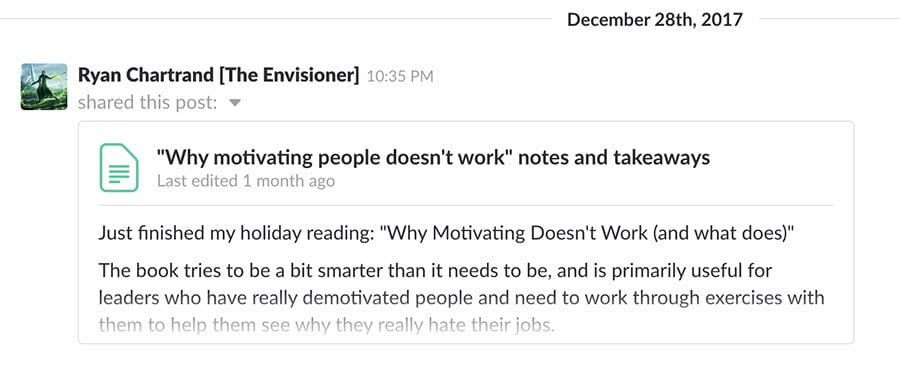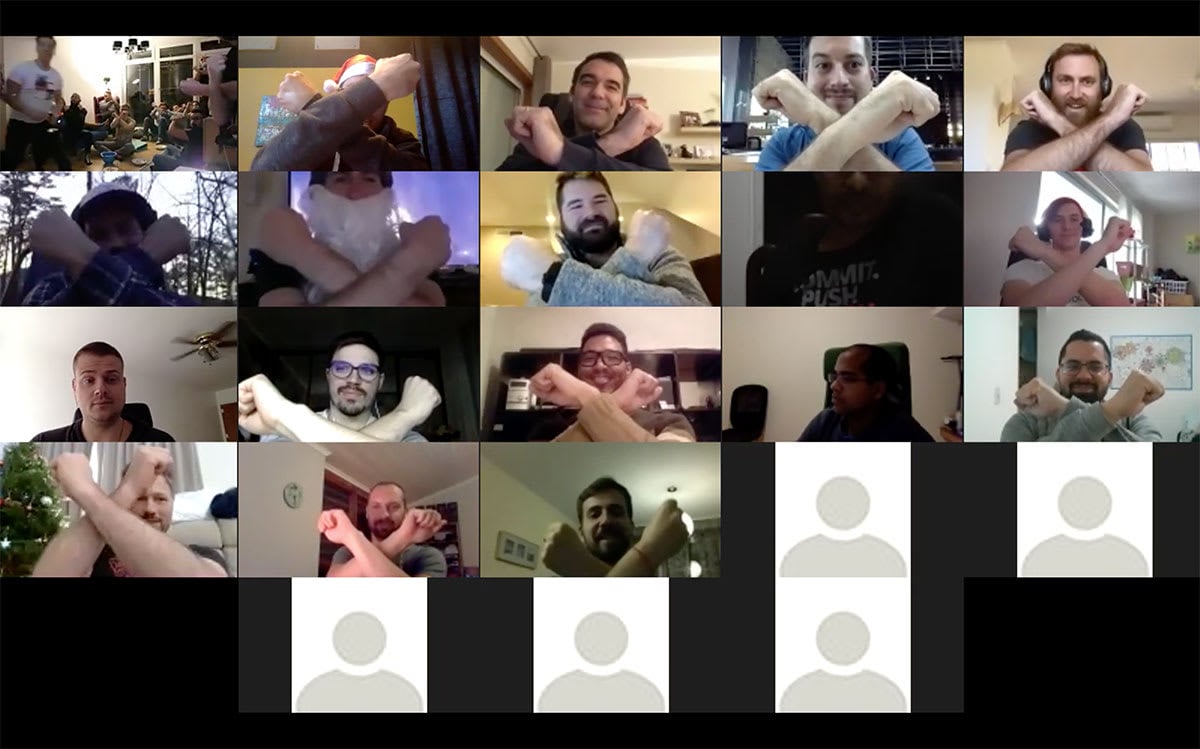If you've recently hired remote developers to augment your office-based team, you might be struggling to make the remote team feel included.
There is a simple solution, however. Based on ten years of experience with remote teams, here are the six key habits that will completely change how your remote staff feels.
If one person is on a video call, everyone is.
As if meetings weren't already frustrating and challenging enough, combining a remote team with an office introduces several tricky challenges.
That said, they're relatively easy to resolve (and even completely avoidable as you'll see later).
A great tip from the distributed team at Trello is to make sure your office team isn't trying to gather in a conference room for a Zoom/Hangout call.
Although it's very tempting to do so, this only makes it much more difficult for the remote team members to hear, read, engage, and feel included in the meeting.
Send everyone back to their desks, join a Zoom meeting together, but as individuals, and ensure everyone has the same good experience.
Protip: Whenever possible, have someone from the remote team run the meeting. There's nothing that tells someone: 'You're an important part of the team, no matter where you are,' as reliably as letting them run the meeting.
Train your team to be Mute Button Jedi

If you embrace the previous tip, a key skill you'll want your team to quickly pick up is mastering the mute button.
There's nothing more disruptive for a meeting than when Jeff starts talking and you can hear him echoing through someone else's microphone.
You might even consider moving your meetings to Discord to enjoy the 'push to talk' feature, which is a much easier way of making sure you're muted before/after talking. Keep in mind, however, that Discord doesn't support video (at the time of writing).
Protip: People are going to forget about the mute button, so try to be patient. Send them a kind DM on Slack, and don't let it get on your nerves.
Avoid meetings altogether
This idea might sound impossible, but consider dumping meetings altogether to avoid their challenges.

This is what remote-first companies like Basecamp (authors of REMOTE) and X-Team are already doing successfully.
You don't have to eliminate all meetings, but you can certainly avoid most of them if you learn how to embrace journaling in Slack.
Journaling: An approach where every team member (office AND remote) has a dedicated channel in Slack where they post daily progress updates, things they learned, new ideas they're working on, notes, requests for feedback, etc.
When you have everyone journaling in Slack, you'll quickly discover that meetings become redundant because you're already aware of everything each of your teammates is working on, what they're thinking about, what they're learning, and what they need help with.
You're moving forward together, and that is how you discover the true power of journaling/documenting and becoming a remote-first company.
Here's a video showing journaling in action:
As well as a journal post on work progress:

And a journal post on notes about a book (which spurred a long, insightful asynchronous meeting that may have never happened if I'd only shared it with "people in the office"):

You can learn more about journaling in Slack in our Definitive Guide to Remote Development Teams chapter on communication.
Share knowledge constantly.
Whenever you break into a whiteboarding session in an office, you have to remember that your remote team isn't seeing that information.
That's not to say you shouldn't collaborate on a whiteboard — that's one of the few reasons to even keep your office after all.
What it does mean is that you want to be moving information as quickly as possible to your remote tools (e.g., take photos of whiteboards and post them to Slack).
The longer you keep others out of the mix, the slower your team moves forward as a whole.
The more ideal remote-first approach, on the other hand, would be everyone using digital whiteboarding tools for collaboration.
Sure, it's not as good as everyone being gathered around the same office whiteboard, but you'll make the remote team feel more included and save your office team the time they would've spent re-communicating everything.
Donuts aren't just for office teams
Put yourself in the shoes of someone on the remote team for a moment. Then imagine the office team having a party, going to happy hour together, giving each other birthday cakes, and of course, getting donuts in the morning.
How does it make you feel knowing that you aren't included or enjoying that camaraderie and the perks of the office?
Not great, I'm sure.
This is why it's important to also be aware of what events your office team is hosting — everything from donut runs to birthday parties — so that you can find ways to include the remote team in those events.

Giving out swag in the office? Send some out to the remote team members as well.
Having a pizza night in the office? Consider reimbursing some pizza delivery for your remote team members.
Time for the annual party? Project a Zoom call on the wall, so it feels like everyone is there. Or why not host the entire party remotely? Every year, we put on a big production filled with entertaining videos, a tournament of games (including custom developed ones), awards ceremony and more, all pre-recorded and streamed live to enjoy together on Zoom + YouTube.

Stop 👏 Calling 👏 Them 👏 Remote.
Last but not least, don't do what I've just done several times throughout this post — constantly refer to them as "the remote team."
Why? Every time you label someone something and repeat it often, they start to believe it's true.
You are one team and one company.
Every time you refer to your offsite staff as "the remote team", your onsite staff reinforces the belief that "the remotes" are not part of the "actual team." This creates walls, and every time you imply it, an additional metaphorical brick is cemented on top of that wall.

The biggest challenge I've found with having an office team combined with a remote team is the tribal mindset that can develop, where one team hides information from the other because they start to feel like they're competing.
You have to avoid this at all costs since it can — and likely will — get toxic.
One of the most important ways to do this is to avoid using language in regular conversations that suggests there are two teams as opposed to one.
If you've hired a remote team that works entirely separately on their own projects, you might think this point about language doesn't matter, but it applies even more as that team will feel even more like an island and disconnected from the company compared to remote staff trying to integrate with an office team.
Instead, refer to a remote team that works on separate projects as "the [project name] team".
This is it. Six simple tips that will make your one team much happier and more productive.
For more tips, check out my other post on the same topic.
We also have this great guide available, which condenses ten years of X-Team experience on this very topic into a very manageable form.
What strategies and tips do you use when helping your remote staff feel more included in your office-based company? Tell us in the comments below.



